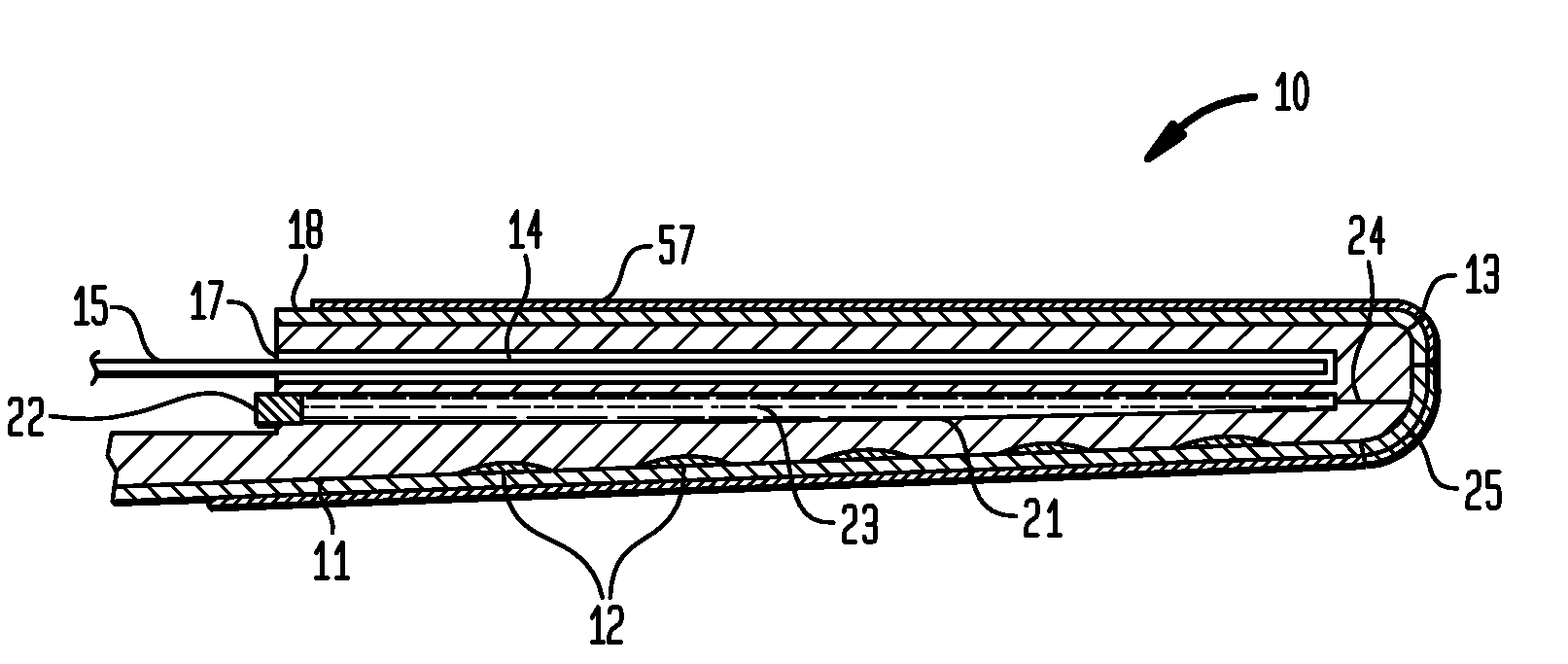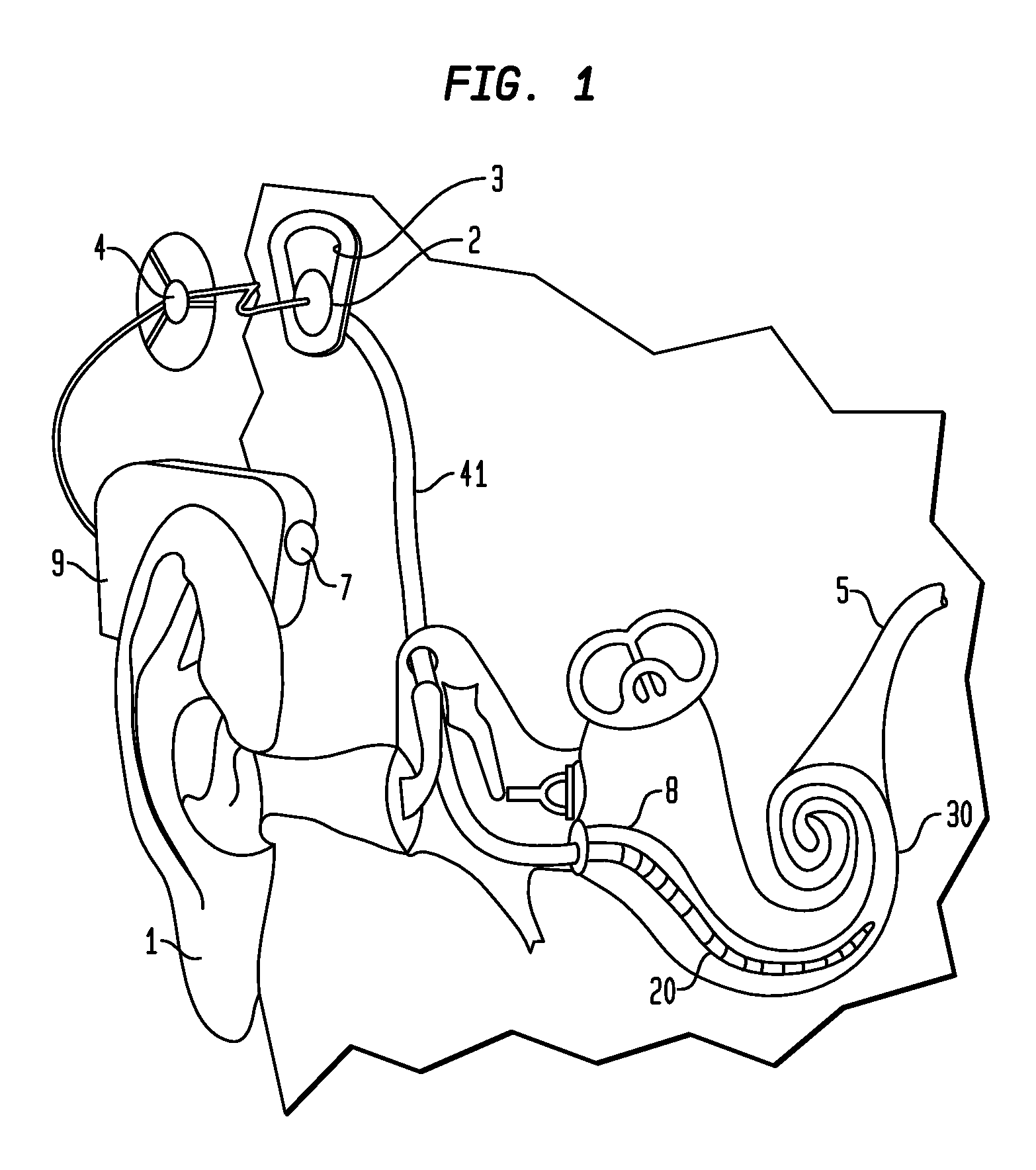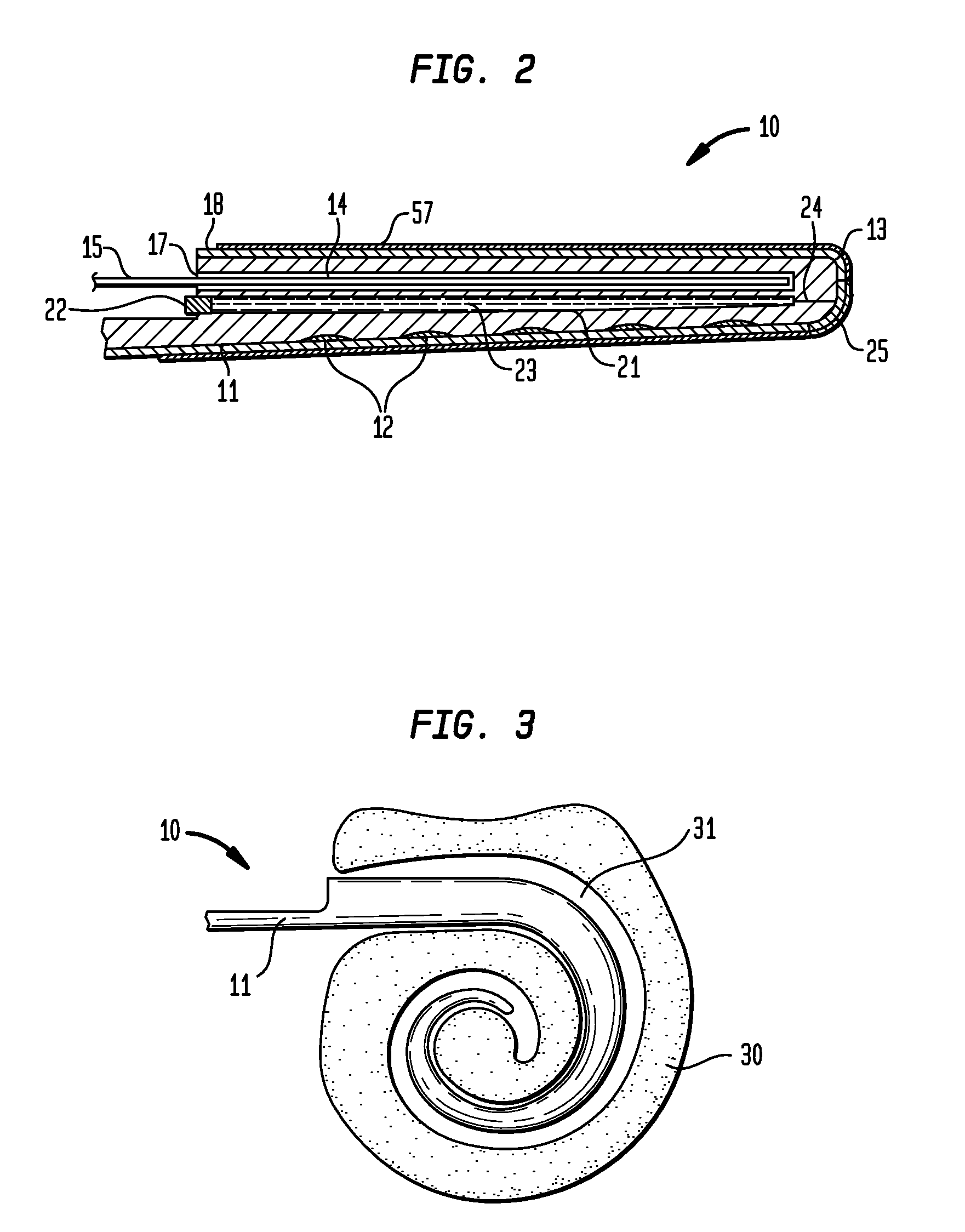Apparatus for delivery of pharmaceuticals to the cochlea
- Summary
- Abstract
- Description
- Claims
- Application Information
AI Technical Summary
Benefits of technology
Problems solved by technology
Method used
Image
Examples
Embodiment Construction
[0079]Before describing the features of the present invention, it is appropriate to briefly describe the construction of one type of known cochlear implant system with reference to FIG. 1.
[0080]Known cochlear implants typically consist of two main components, an external component including a speech processor 9, and an internal component including an implanted receiver and stimulator unit 2. The external component includes a microphone 7. The speech processor 9 is, in this illustration, constructed and arranged so that it can fit behind the outer ear 1. Alternative versions may be worn on the body. Attached to the speech processor 9 is a transmitter coil 4 which transmits electrical signals to the implanted unit 2 via a radio frequency (RF) link.
[0081]The implanted component includes a receiver coil 3 for receiving power and data from the transmitter coil 4. A cable 41 extends from the implanted receiver and stimulator unit 2 to the cochlea 30 and terminates in an electrode array 20...
PUM
| Property | Measurement | Unit |
|---|---|---|
| Time | aaaaa | aaaaa |
| Length | aaaaa | aaaaa |
| Flexibility | aaaaa | aaaaa |
Abstract
Description
Claims
Application Information
 Login to View More
Login to View More - R&D
- Intellectual Property
- Life Sciences
- Materials
- Tech Scout
- Unparalleled Data Quality
- Higher Quality Content
- 60% Fewer Hallucinations
Browse by: Latest US Patents, China's latest patents, Technical Efficacy Thesaurus, Application Domain, Technology Topic, Popular Technical Reports.
© 2025 PatSnap. All rights reserved.Legal|Privacy policy|Modern Slavery Act Transparency Statement|Sitemap|About US| Contact US: help@patsnap.com



